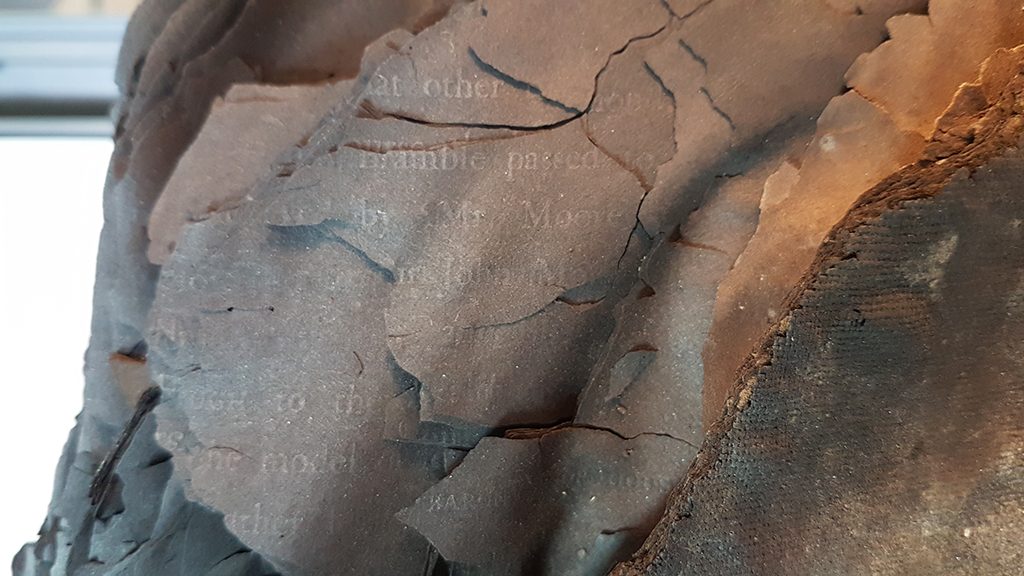Following the Fire: Displaying Damaged Artefacts from the Mackintosh Library
Conservation, Materials | Written by: Lynsey Haworth | Friday 7 July 2017
On the 23rd of May 2014, a fire broke out at one of Glasgow’s most iconic landmarks. The early 20th century Charles Rennie Mackintosh Building at The Glasgow School of Art, which contained the institution’s famous library, was an architectural masterpiece.
A lot has been written about the initial salvage operation, discovering items that had miraculously survived, and the ongoing restoration project. We helped tell the story in a new display at the Engine Shed in 2017, which also showcased items recovered from the Mackintosh Library’s remains.
Approaching the artefacts
From a conservation perspective, this exhibition was challenging. Normally, we assess and treat objects before they’re placed on display. But how do you conserve something that has been damaged by fire?
How far should an object be ‘repaired’ when it’s being used to illustrate the effects of damage? These practical and ethical questions left us scratching our heads, trying to determine the best approach to take with the objects from the Mackintosh Library.

A close-up of a book from the library damaged in the fire. Some of the text is still legible.
Eventually, we decided that interventions would only be carried out on physically unstable objects at risk of further damage. All the items were checked and photographed so that their condition can be assessed at the end of the exhibition. Any changes will be noted. Two items needed to be stabilised: a wooden Mackintosh clock face and an iron window frame.
Displaying the damage
The clock face is made of several panels, one of which had split. Additionally, one side of the face was very burnt, leaving the surface fragile and vulnerable to flaking. The split was cleaned of dust and debris and adhesive was used to re-join the piece.
A combination of pH neutral PVA adhesive and deionised water was used to make sure that the areas at risk of flaking remain attached.

The wooden Mackintosh clock face.
The window frame posed a greater challenge. This was partly because it’s so large, but also because it still had fragments of glass, paint, putty and mastic attached.
It was crucial that these pieces weren’t lost, and we experimented to determine the most appropriate method for holding these pieces in place.
Eventually, we concluded that pH neutral PVA adhesive and Paraloid B72 – a resin soluble in acetone which also acts as an adhesive – were the best options. Some of the fragments to be secured in place were so small that the PVA and Paraloid had to be applied using a syringe or pipette. These substances were specifically chosen because they are chemically stable.

Part of a damaged lamp from the famous library on display at the Engine Shed.
Although the other ten objects in the exhibition were considered stable enough to not need conservation treatment, the lingering effects of the fire are still very much evident.
The clock hands curl as a result of the heat it was exposed to, the surviving part of the library book is extremely brittle (small pieces tend to break away), and the charred fragments of wood leave a dark powdery deposit behind on surfaces they touch.
However, that’s was the exact purpose of this exhibition – to explore how these materials reacted during the fire in the Mackintosh Building.
- Share this:
- Share this page on Facebook
- Share on X
About the author:
Lynsey Haworth
Lynsey works in the Collections Unit at Historic Environment Scotland and is responsible for the care of objects relating to properties in central Scotland. This includes documentation, collections care, research and outreach, and risk management.
View all posts by Lynsey Haworth



